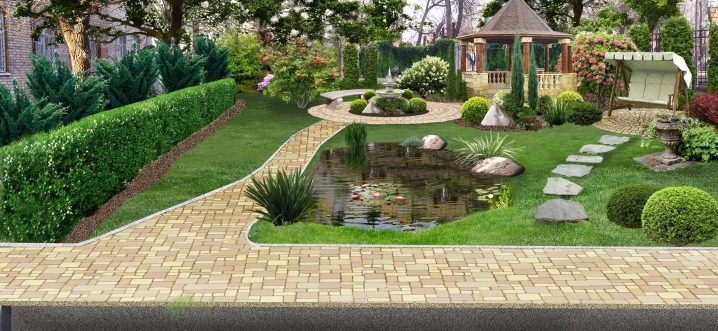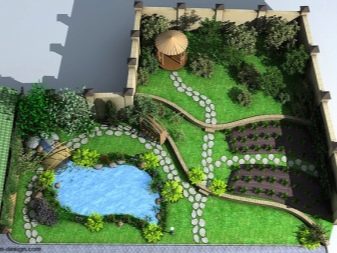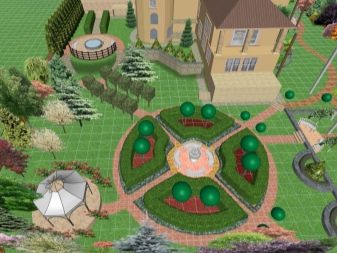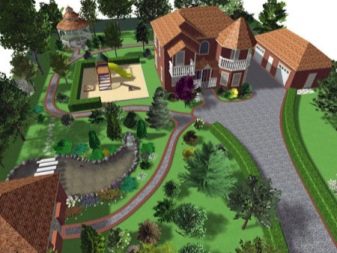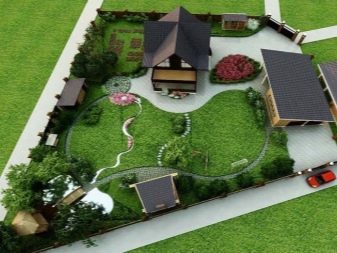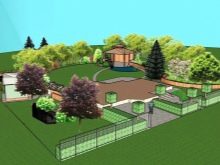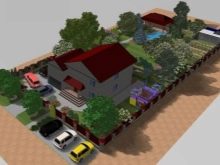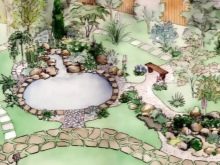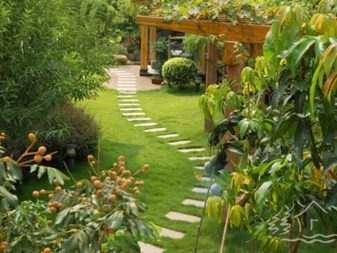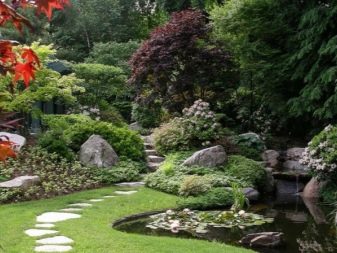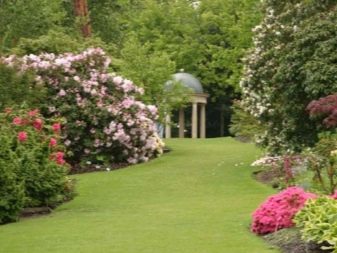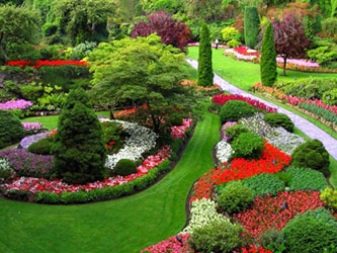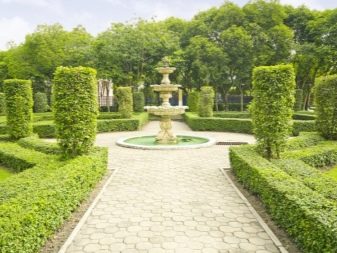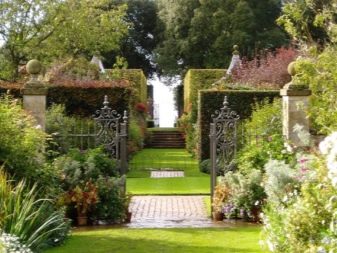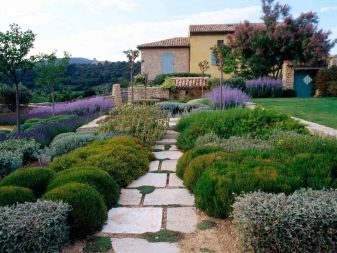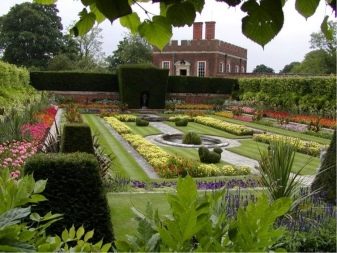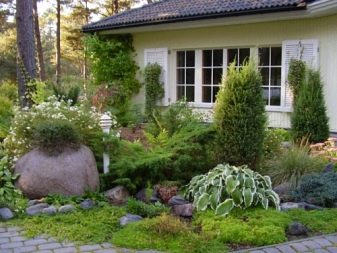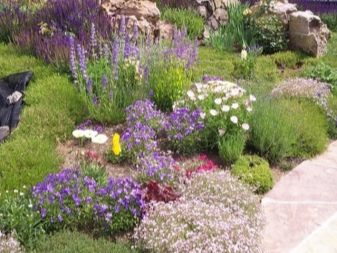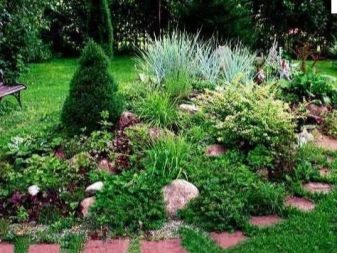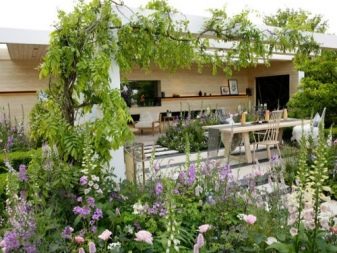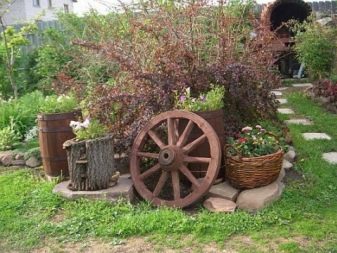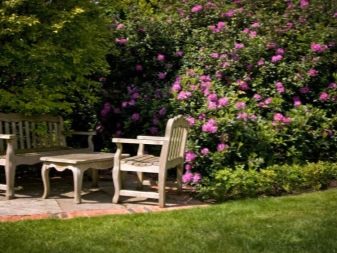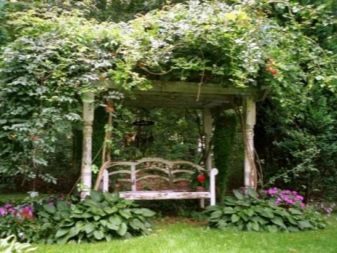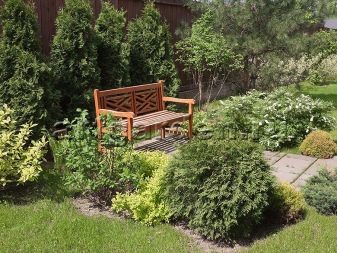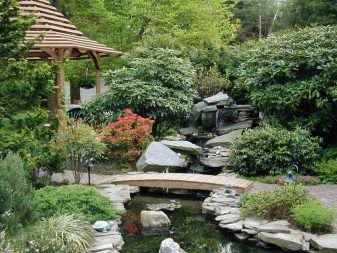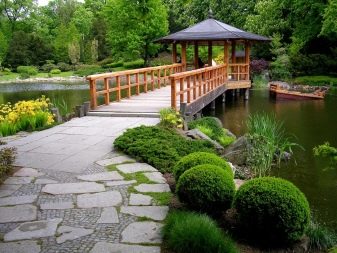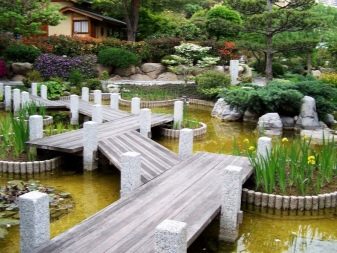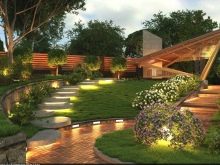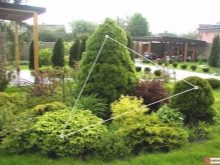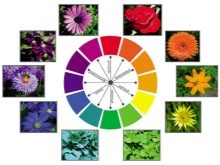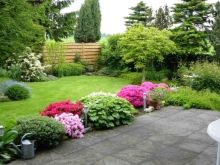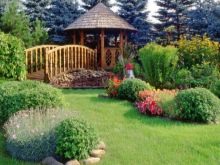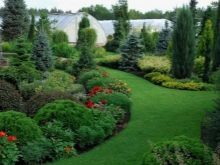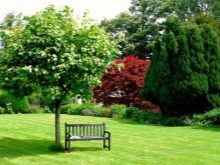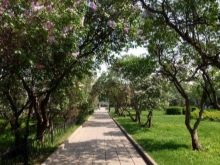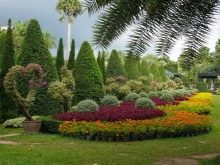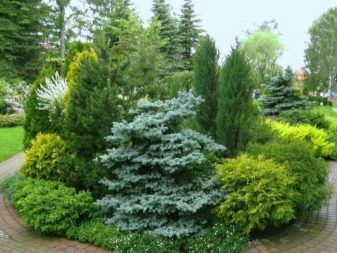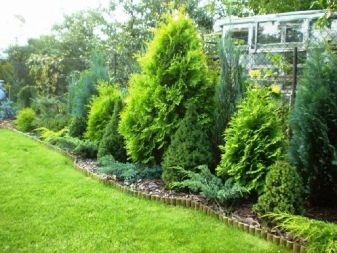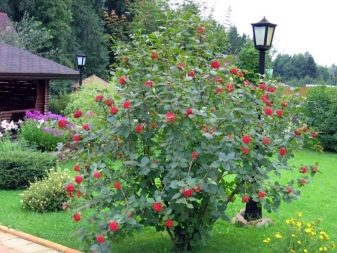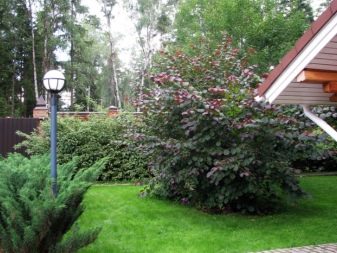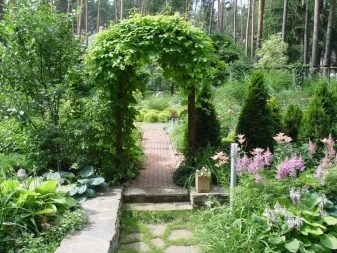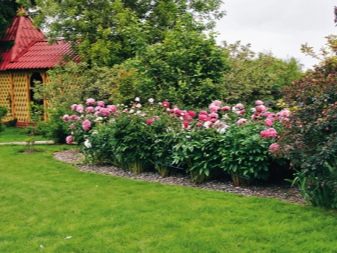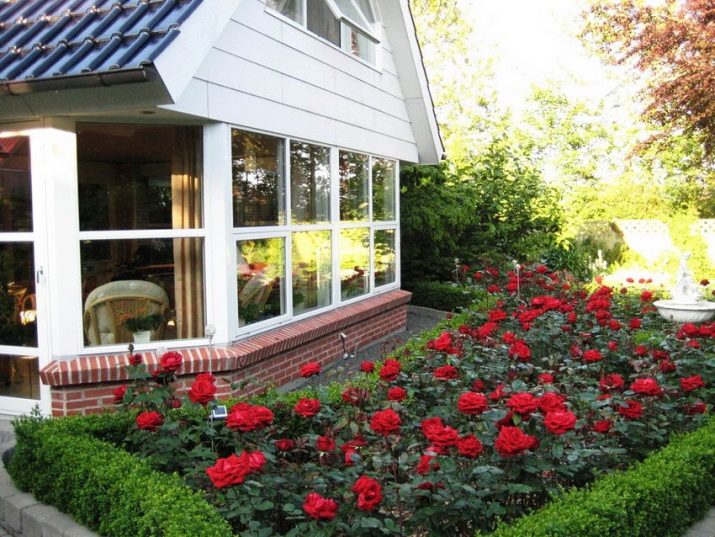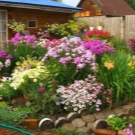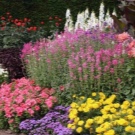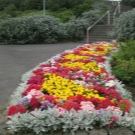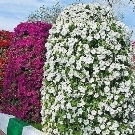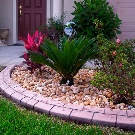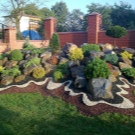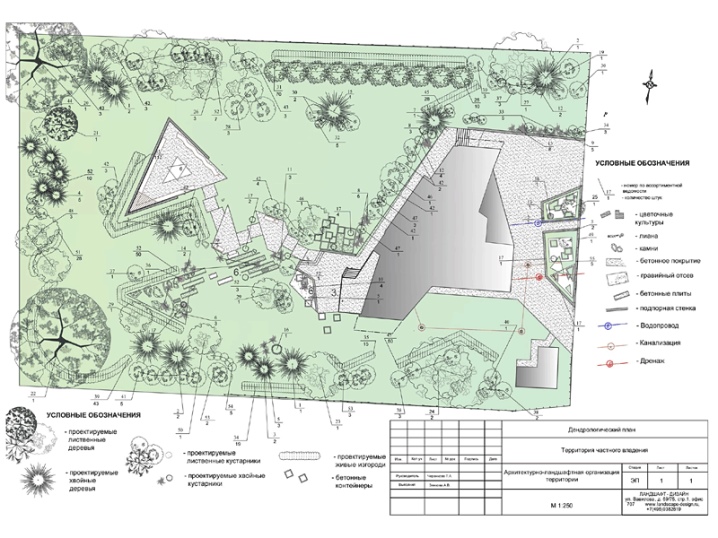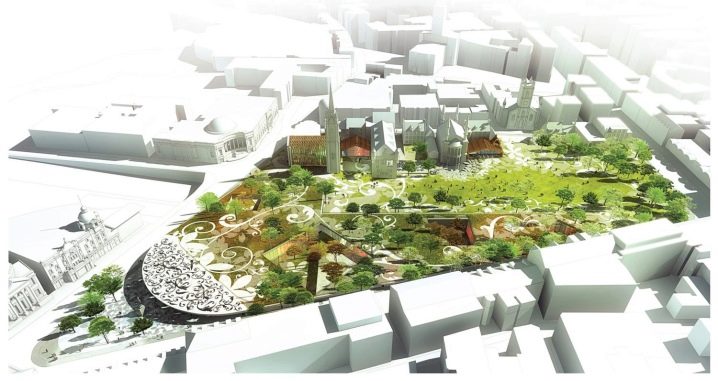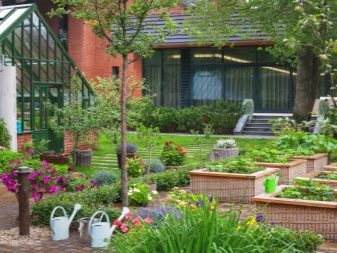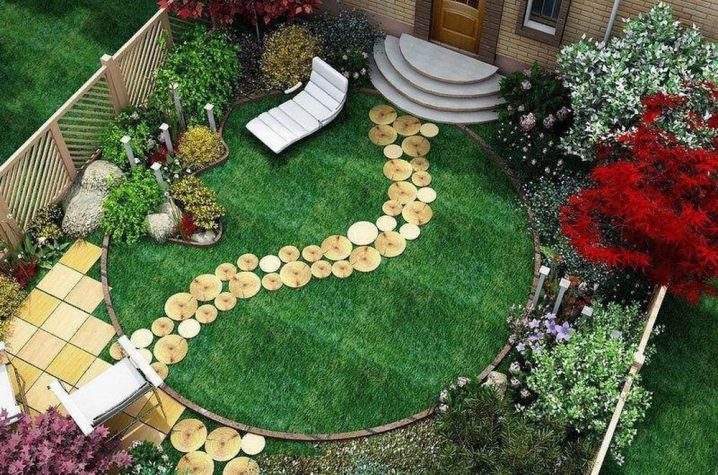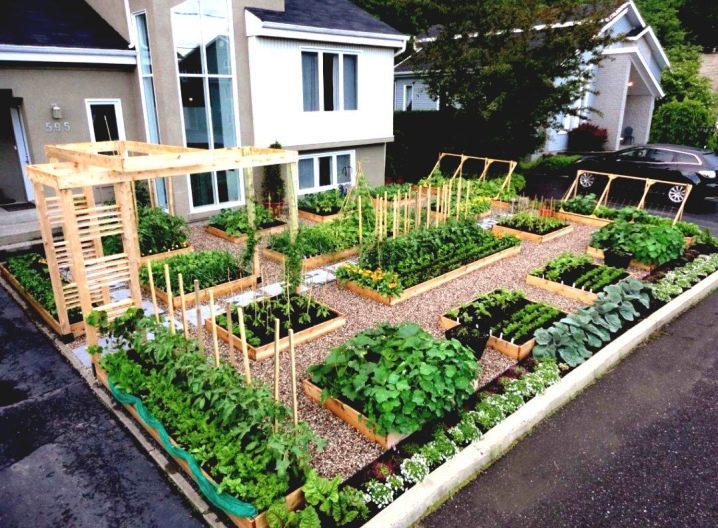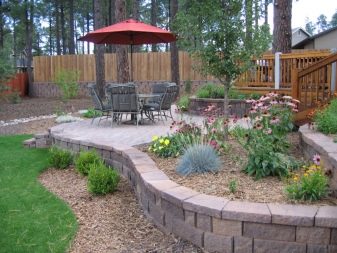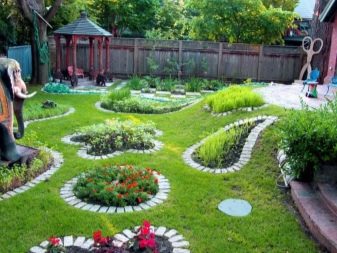Landscape design: the subtleties of landscaping site
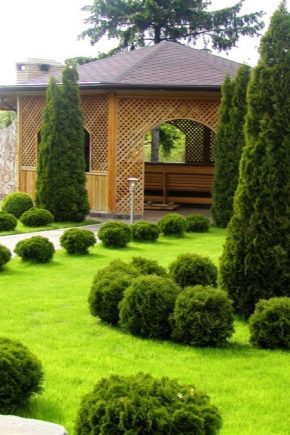
Recently, people are trying to spend as much time on nature. In the fashion of natural fabrics, natural food, vegetarianism and other areas of naturalness. Having your own country house with a plot is the dream of any citizen.
As in any room, and in the adjoining space, everything must be properly arranged, so that each square centimeter of space will benefit and contribute to a harmonious aesthetic appearance. Here such a direction in design as landscape design can help. Let's try to understand its basics.
Special features
Like any project, the improvement of the suburban area must first be presented in the form of a plan: you can make it yourself or contact the experts.Conveniently, if the landscaping project is completed using a special program (for example, Realtime Landscaping Architect, Complete Landscape Designer 3), then you can easily make changes, create 3D projects.
If you have an empty area, then when preparing the plan, it is worth considering all the details of the future section: building sites (house, garage, barn, toilet, greenhouse, bath), gazebos, pool, garden, garden, paths, watering and lighting systems. If there are already some buildings or plantings on your site, then before developing the landscape design of the site they need to be transferred to the plan.
Before planning plantings, it is necessary to collect all the information about the site and the surrounding areas, climate, etc. It is important to find out the condition of the soil (fertility, acidity), the location of groundwater. All these data play a crucial role in planting.
And so, all the preparatory work performed. Now we proceed to the design of the site. It is important to understand, as in any design, landscape design has its own laws and rules, the non-observance of which will lead to a jumble of unnecessary details and the lack of rational use of space.
Registration of the entire site is best done in the same style.
Denote the main ones:
- English or landscape. At registration it should not be obvious that the plot is well-groomed and planned, as if nature itself has created a composition. Be sure to have a smooth and clean lawn.
- French. Unlike the English style, French assumes full symmetry and accuracy in the arrangement of all objects, whether plants or buildings.
- Scandinavian. This style is characterized by a chaotic arrangement of objects, but still united by some harmony. Natural furniture (logs in the form of benches, wooden and wicker furniture), an abundance of plants, the presence of a large number of stones usually act as integral parts in such a design.
- Russian manor. The main feature of this direction is a skillful combination of functionality and picturesqueness. Mandatory details in this design - beds and fruit and berry crops.
- Japanese, Chinese. Although these styles differ in details, the general idea of Asian philosophy allows them to be united into one group. Characteristic features of such styles are naturalness, unity with nature, the absence of symmetry.
To create a beautiful landscape design on the site, it is not necessary to take special courses and receive diplomas.
It will be enough if we consider the basic principles:
- The dominant rule says that in any project it is necessary to choose one main object, and the rest of the environment will play a complementary role in the background.
- Another condition for creating harmony is simplicity and brevity. Do not overload small areas with lots of details.
- The principle of the three or the law of the triangle. The number 3 is ideal for creating any composition: a flowerbed, divided into three unequal parts, the use of three colors for planting plants, three sizes of trees - there can be many examples. Here it is important that the three parts should be different (ideally, if there is a submission to the golden section or in the ratio 9/6/3).
- The color wheel will help in the selection of color accents.
- And the rule of the square will allow not to forget about the existence of four sides of the world: on the northern side of the site there should be shade-loving plants, the southern side is better suited for a recreation area and light-loving colors.
Plants
As noted above,The choice of one or another plant should be carried out taking into account many factors: a stylistic idea, climate, soil conditions, humidity, the shadow or sunny side, the possibility of maintenance and processing. For example, it is impossible to plant a cactus (light-loving and undemanding to watering plants), violet (loves the shadow) and orchid (loves heat and humidity, but not direct sunlight) in the same area.
In addition to its decorative function, plants in landscape design play other roles: space zoning (separation of recreation areas and residential areas), masking of household objects.
There are groups of plants that are most often used in garden plots.
Trees
Deciduous non-fruit trees such as maple, ash, oak are best planted where you want to create cozy shady places: on the edges of the plot (they will hide you from the intrusive looks of neighbors), in the playground and in the recreation area near the gazebo. Fruit trees are planted in the gardens for harvesting or in the recreation area (pear, apple, plum). Coniferous trees are the favorite heroes of many design compositions, they are unpretentious and easily fit into the landscape.
Cypresses, thuja, juniper, dwarf and ordinary spruce trees and pines - take a closer look at them, they can complement any style.
Shrubs
Shrubs should definitely be planted on the site, they grow much faster than trees, but they are no less useful:
- Gastronomic and medicalFor example, currant (white, black, red, pink), raspberry, gooseberry, honeysuckle, sea buckthorn, bird cherry, shadberry are just a small list of tasty and healthy berry bushes.
- Aesthetic. Lilac, hydrangea, acacia, rose, jasmine will flourish from spring to autumn.
- Disguise. Creepers - girl and wild grapes, ivy, clematis with proper support in the form of trellis will help to hide all technological nodes.
Flowers annual and perennial
The variety of types of perennial and annual flowers allows you to arrange a bed of any color, shape, size:
- Free flower beds - outwardly they do not have a clear border (although in fact it exists) and forms.
- Flower beds in our usual sense: a plot of land or a certain container planted with flowers.
- Rabatka - rectangular flowerbeds, most often they are satisfied along the buildings and the fence.
- Mixborder - from the very name it follows that these are beds that imply a mixture of many-flowering plants. Often, the flowering period of plants in such beds is chosen so that the flowerbed blooms all summer.
- Curbs used for registration of tracks and paths.
- Alpine Hill - one of the most favorite types of flowerbeds by all gardeners: a multi-level flower bed with different colors, stones and artificial fountains are used as decorative elements.
- Vertical flower beds suitable for small areas - the plants are planted in pots attached to some kind of vertical surface.
From annual plants pay attention to petunias, marigolds, asters, ageratum, pansies, stock-rose, snapdragon, marigolds. Of the perennial flowers due to unpretentiousness in the care often use crocuses, lilies of the valley, Turkish carnation, lupine, poppy, phlox irises.
Having decided on the types and number of plants, a dendrological plan (proposed places for planting trees and shrubs), a schematic arrangement of paths and grounds, a list with all plants, an estimated plan for the arrangement of flower beds and artificial reservoirs should be added to the overall design of the site.
Design
Above, we discussed the stages of determining the concept of the site: a preliminary plan, the choice of design style and the species composition of plants. In order to organize all this at the proper level, you need to go to the engineering design of the future landscaping of the site.
This stage may include such types of work as:
- Strengthening the coastline and slopes from landslides.
- Elimination of unnecessary landings and buildings.
- Formation of a new landscape (especially important if vertical design of a site with raising and lowering of certain zones is assumed or when the site initially has a noticeable slope), while it is necessary to plan and organize properly the flow of thawed and rainwater.
- Drainage of wetlands and irrigation of arid zones.
- Measures to protect the soil from wind and leaching.
- Formation of sites under construction and walkways.
- Electrical preparatory work for the new lighting, irrigation systems and irrigation.
It is better to initially make an estimate for all the works in order to understand the full cost of the design you have chosen If the final price does not suit you, it is better to reschedule the design project at the initial stage, and not in the process.
There are several other aspects that are better taken into account at the beginning of your journey to a beautiful design project:
- The feasibility of the use of certain materials and plants. For the moderately continental climate, in which most of our country is located, it is better to choose frost-resistant and unpretentious plants, and materials for decoration of the house and other outbuildings should be resistant to temperature extremes.
- The safety of structures and materials should not be in doubt, especially if there are children and animals on the site.
- Time and frequency of your stay at the dacha, as well as a predisposition to earthworks and construction works.
If you are planning a non-permanent stay and only for recreation, then you should not break up large gardens and complex flower beds, it is better to give preference to the lawn, fruit trees and perennials in small beds.
Beautiful examples
For inspiration and evidence that any piece of land can be made attractive, here are some examples.
The small house territory is framed elegantly and functionally: there is a recreation area, but there are a sufficient number of different types of plants.
And here is an example of a successful garden design (different geometric shapes of squares, rectangles that are original in appearance and easy to use).
Vertical zoning with rest area and flower beds.
Nontrivial execution of flowerbeds for lovers of flowering plants.
On the secrets of landscape design of a narrow suburban area, see the following video
